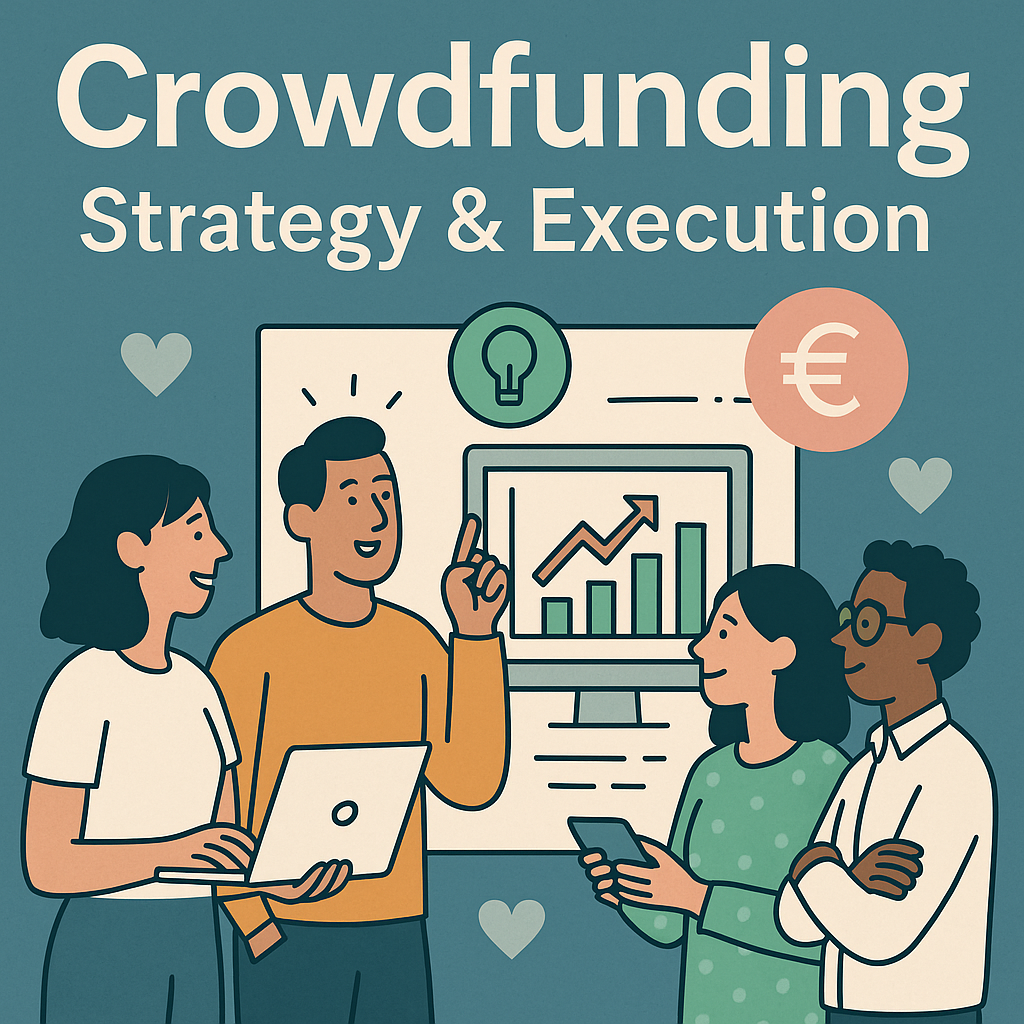

Crowdfunding
Donor Engagement
Challenge Week
Crowdfunding has transformed from a scrappy fundraising alternative into a core component of many institutions’ digital engagement strategies. Done well, it is fast, focused and deeply participatory - drawing in broad communities, surfacing creative ideas, and unlocking donor segments that traditional appeals often miss.
At its core, crowdfunding invites many people to make relatively small contributions toward a tangible outcome. But it’s not just a financial tactic - it’s a storytelling and mobilisation tool. At the University of Essex, for example, crowdfunding generated more than £256,000 across 320 projects and nearly 4,600 individual donors, bringing in participants who had never previously engaged with the institution. Campaigns there varied from research-led student initiatives to emergency hardship funding, but what united them was the ability to connect cause and community at speed.
To execute a successful crowdfunding campaign, preparation begins well before launch. The most effective projects already have 25–30% of their funding pledged before going public. This “quiet phase” is critical - it allows core supporters, past donors or internal champions to seed the campaign and create early momentum. That momentum builds social proof, which is one of the most important predictors of success. Many crowdfunding platforms now even offer the option to keep a campaign hidden until it reaches a minimum threshold for just this reason.
Goal-setting, too, requires care. Your target should be ambitious enough to inspire participation but realistic enough to avoid falling flat. Projects that meet or exceed their target often perform better because donors feel they’re contributing to something successful. Stretch goals - or staged mini-goals - can help sustain interest throughout a multi-week campaign. Match funding adds further incentive, offering time-limited boosts that can drive urgency. Our blog on matchfunding and how it affects universities’ crowdfunding programmes is a helpful resource here.
But perhaps the most decisive factor in crowdfunding is the story. Donors don’t just give to numbers - they give to people, causes and impact. Campaigns supported by high-quality video, compelling photography and a clearly written narrative consistently outperform those without. An effective campaign page will answer three questions immediately: What are you raising money for? Why now? And what difference will my gift make?
Teams that thrive in this space know that crowdfunding is not a solo effort. It’s orchestrated. Behind every successful campaign is a motivated group of project leaders, student reps, ambassadors or staff who take responsibility for spreading the word. Their role isn’t just to share links - it’s to make the campaign feel alive. Our insights on creating a culture of giving and motivating donors to give to digital appeals go deeper into this principle.
Choosing the right platform is another strategic decision. For some organisations, using a major third-party site like GoFundMe or JustGiving may provide simplicity. But for universities and schools with a broader range of campaigns and governance needs, a platform that allows central oversight, custom branding and structured reporting is key. Hubbub’s own tools allow self-service campaign creation within a permissioned environment, enabling rapid launch while still ensuring brand and compliance consistency.
Once launched, campaigns need fuel. That means multi-channel communications - email, social media, WhatsApp groups, alumni newsletters and organic PR. Peer-to-peer sharing is especially powerful in crowdfunding. Projects that spread via ambassador networks or supporter referrals frequently outperform those that rely solely on institutional broadcast. Our post on 7 ways to use Twitter during your crowdfunding campaign includes some effective, replicable tactics.
Campaigns also need pacing. A typical campaign might last three weeks, but many underperform in the middle. Midpoint stagnation can be offset with scheduled content drops - for example, interviews with project leaders, updates on progress, or reminders of challenges unlocked. As with a Giving Day, regular visible movement toward a target drives conversion. This was central to success in our case study with Ulster University, where real-time impact messaging helped build trust and urgency during a time of crisis.
After the close of the campaign, stewardship is essential. A thank-you email isn’t enough. Backers should receive updates on the project’s success - ideally with images, personal notes, or short videos that demonstrate progress. The most successful institutions use this as a pivot point - not the end of a transaction but the start of a relationship. Stewardship also opens the door for a follow-up ask or a deeper level of engagement, as shown in our blog on how digital fundraising can improve donor retention.
Finally, no campaign should conclude without review. What worked? What didn’t? Which audiences converted at the highest rate? When was traffic strongest? Which messages generated clicks or shares? This data informs your next campaign and, over time, builds a knowledge base that makes each successive effort stronger and more efficient. The team at Essex adopted this feedback loop to great effect - moving from one-off projects to a scalable, replicable crowdfunding programme embedded across the institution. For more insights on this journey, read the full Essex crowdfunding story.
In the end, the real power of crowdfunding lies not just in its ability to raise money but in its ability to bring people together. It invites participation, showcases creativity, and rewards initiative. It gives alumni and supporters a direct role in shaping outcomes. And when done well, it becomes a proving ground for ideas that can grow into major campaigns, long-term programmes or permanent donor pipelines.
If you’d like support turning these principles into campaign frameworks or scalable crowdfunding models, get in touch. We’d be happy to help.

By clicking “Accept”, you agree to the storing of cookies on your device to enhance site navigation, analyze site usage, and assist in our marketing efforts. View our Privacy Policy for more information.


